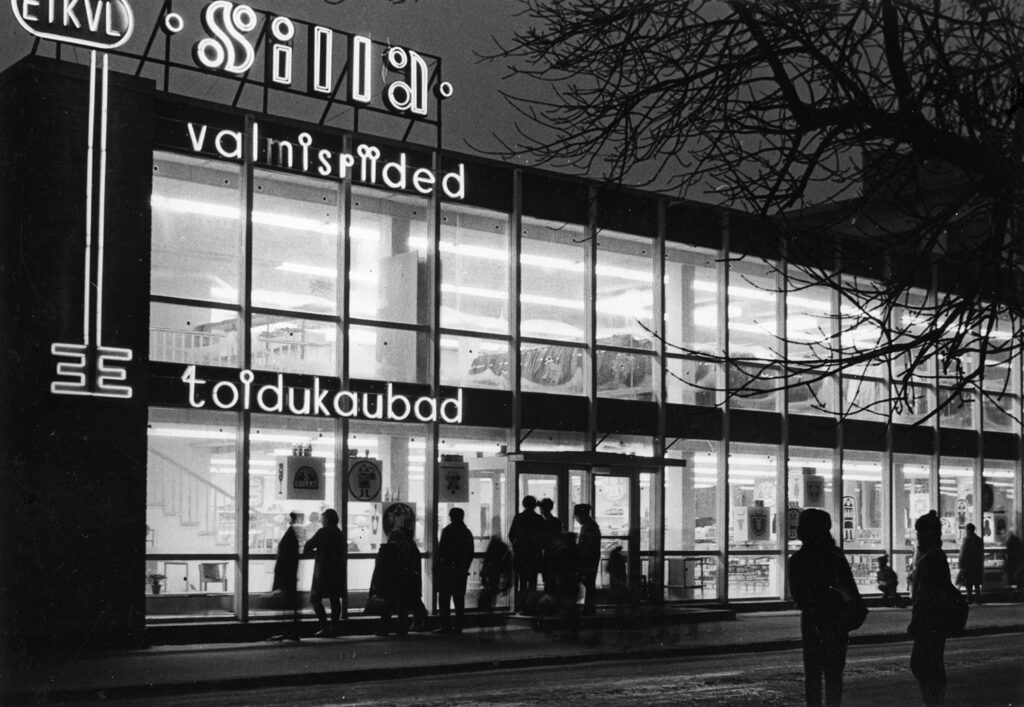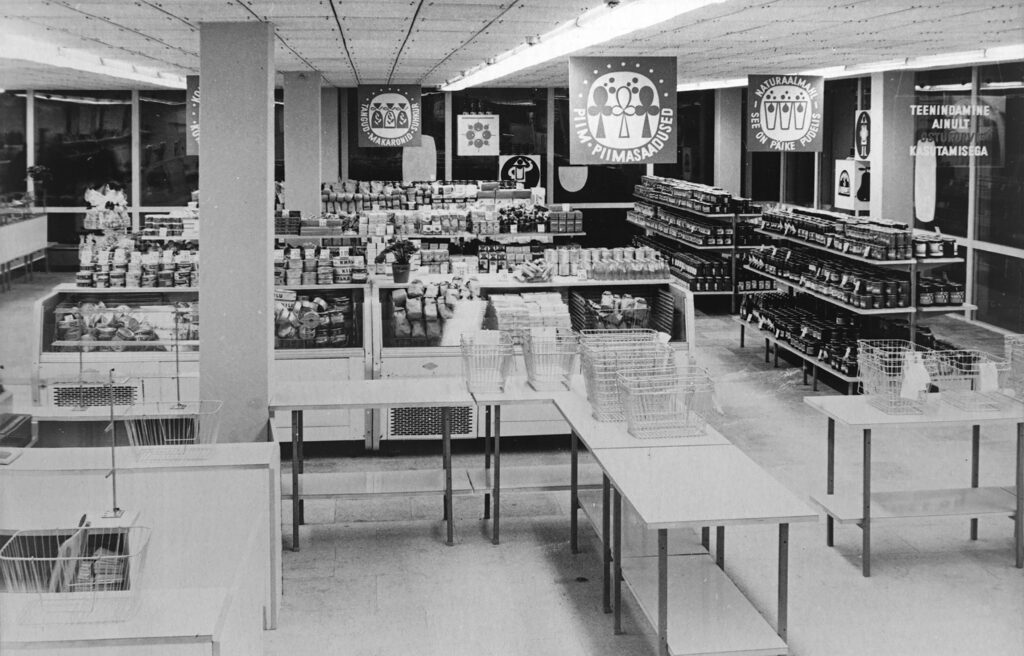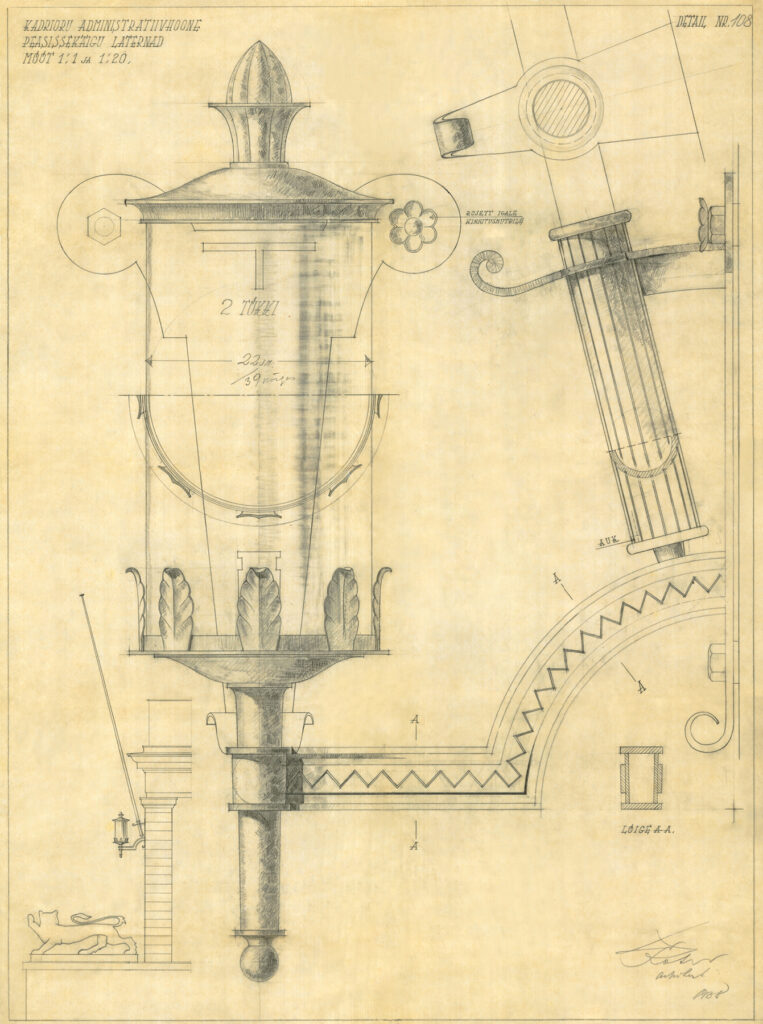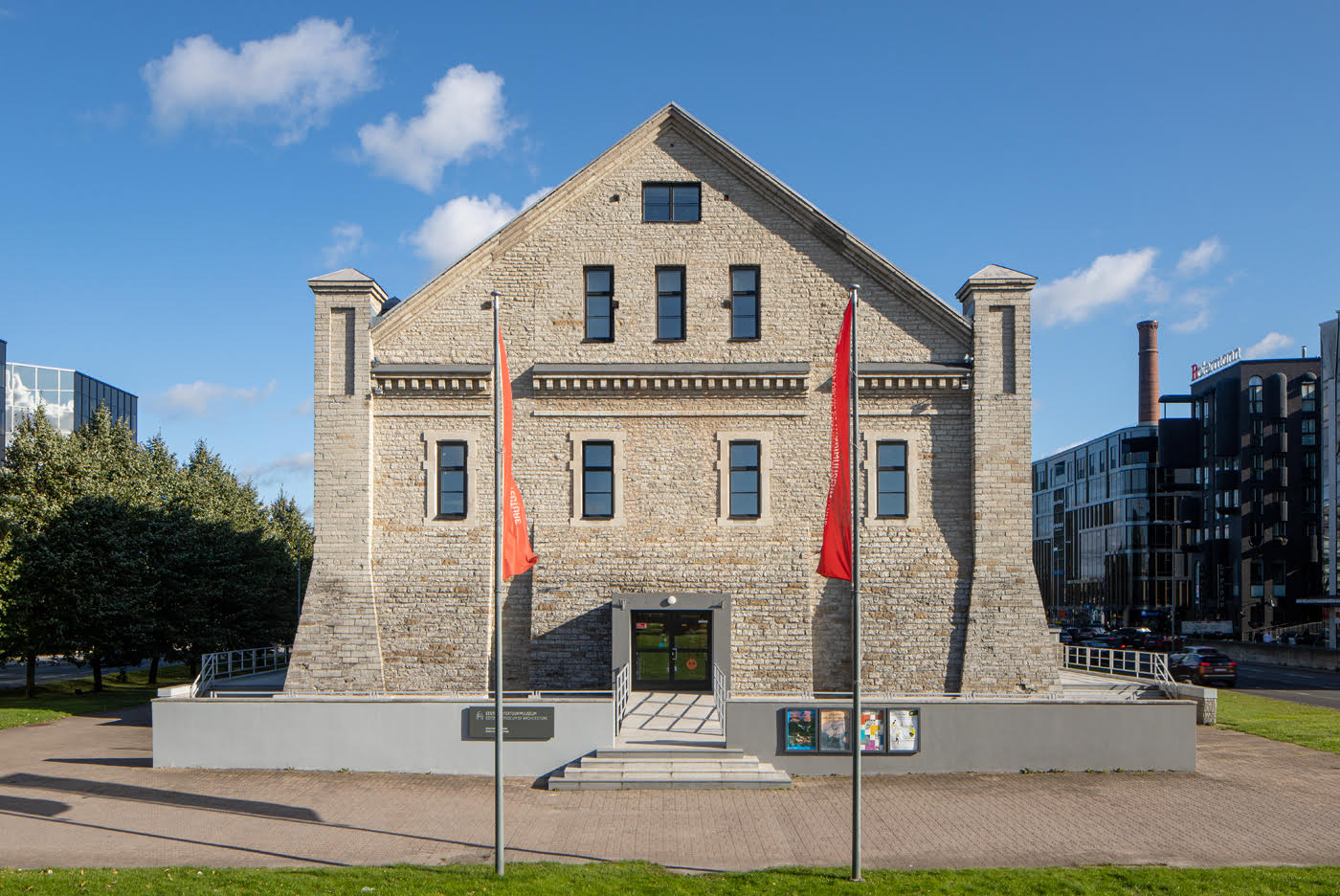EAM 3.4.9; EAM 3.4.12; EAM 3.4.14
Competition works of rural cultural centre
At the end of 1947, an architectural competition was organized to find the best solution for the standard project of rural area cultural centres. 40 concept designs were submitted to the competition. Despite the large number of participants, the jury was only satisfied with the projects depicting the municipality culture centres. The first and second prizes were shared equally by Henn Roopalu’s work “Agitator” and August Volberg’s and Peeter Tarvas’ work “Tuljak”. The successful facade and plan solutions of the works were highlighted. The third prize went to the project “200” by architect Ilmar Laasi. In the opinion of the jury, the concept designs of the village’s cultural centres were of a significantly weaker level, which is probably the reason why the first and third place were not awarded. The concept design “Accent” by August Volberg and Peeter Tarvas was recognized with the II prize. At that time, community and cultural centres played an important part in the country’s cultural policy, what happened in them was controlled by the ruling power and carried the Soviet ideology to a greater or lesser extent. Text: Anna-Liiza Izbaš
(klick on the picture to see more illustrations)
Mart Port, Uno Tölpus, Raine Karp, Olga Kontšajeva, 1963. EAM 4.3.2
Estonian Ministry of Foreign Affairs building
The 11-storey administrative building influenced by the American so-called International Style was completed in the Tallinn city centre in 1968. The symmetrical facade of the building is characterized by regular rows of ribbon windows and a vertical windowless central part, which was supposed to form the background for the statue that stood in front of the building. The building has a U-shaped ground plan. On the first floor of the office building is a spacious vestibule, the walls of the vestibule were covered with pink Cuban origin marble. The offices are located on the following floors, the utility rooms are on the top floor. Conference and meeting rooms are located in the wing buildings, there is a courtyard in the middle of the building parts. A broad hyperbolic paraboloid-shell made of reinforced concrete covers the large conference hall located in the left wing of the building. Due to the complex construction, the lights were installed on the walls of the room and the ceiling was covered by 60,000 empty sprat boxes. The oiled and round sprat boxes helped to diffuse and reflect the light directed at them and ensured good acoustics in the hall. The location of the building is also significant. The office building was built on the site of the Estonian Academy of Sciences, which was foreseen by 1948 Tallinn Cultural Centre design plan (architect Harald Arman), on the other side of the Theatre Square is the “Estonia” theatre – politics and power is facing culture and spirituality. Since the autumn of 1991, the Estonian Ministry of Foreign Affairs has been operating in the former Estonian Communist Party Politburo building. The author of the drawings is Rein Kersten. Text: Anna-Liiza Izbaš
(klick on the picture to see more illustrations)
Toomas Rein, 1983. EAM 48.2.8
Sauna in Kobela
The Linda kolkhoz sauna, designed by architect Toomas Rein, is located in the small village of Kobela in Võru County and is one of the great examples of Estonian rural architecture. Articulated volumes, rounded corners and a red high pitched roof give character to the two-storey building, red wooden details on the windows and doors add contrast to the white facade. The sculptural exterior of the building is also reflected in the interior designed by interior architect Aulo Padar. On the first floor there was a common room with a fireplace, utility rooms and an indoor pool, on the second floor there was a sauna and laundry rooms. An indoor slide between the two floors led from the hot sauna to the cooling indoor pool. From the second floor there is also an access to the terrace of the building, from there a slide and stairs lead to the pond next to the sauna. During the renovation in the early 1990s, the function of some rooms changed and a club started to operate in the building – the indoor pool was covered with a floor and the indoor slide was demolished, the light shaft on the second floor and the glass roof were closed. The composition merges architecture, geometry and abstract painting – black and white architectural photos are arranged in a regular grid, the cross-section of the building and the ground plan are covered by a layer of gold paint and colour spots. Text: Anna-Liiza Izbaš
Edgar Johan Kuusik, 1931. EAM 7.1.76
The War of Independence monument competition work “Mälestis-ehis”
The story of the monument begins in the 1920s, when the statue of Peter I standing on the Freedom Square was taken down (1922) and it was decided to erect a statue of the War of Independence in its place. The construction of the monument delayed, and instead a massive limestone memorial-mausoleum designed by Edgar Johan Kuusik was erected at the Defence Forces Cemetery (1928). At the end of 1930, when the competition for the construction of a War of Independence monument on Harjumäe was announced, Edgar Johan Kuusik in cooperation with Elmar Lohk submitted two works for the competition. The competition entry with the keyword “Mälestis-ehis” repeats the same motif as the memorial-mausoleum in the cemetery – a massive cubic volume with four arches opening towards the four cardinal directions. However, the prize went to the authors’ second work “Pro Patria”. Later, Kuusik used the same style at the gate building of the Defence Forces Cemetery (1938). The competition work “Mälestis-ehis” was donated to the museum by the E. J. Kuusik family in 2021, the drawings were conserved in Conservation and Digitisation Centre Kanut. Text: Anne Lass
Erika Nõva, 1939. EAM 2.6.34
The competition project of physical culture centre “Siseõu”. II prize
Sports and physical culture become the keywords of modern life in the mid-1930s. Planning a representative sports building in Tallinn become on the agenda. A suitable location was found in the Falkpark (today Falgi Park) located at Toompuiestee. In November 1938, the architectural competition was announced. The plan was grandiose: the building had to hold a main hall (20×40 m) for gymnastics, basketball and volleyball, tennis, wrestling, weightlifting and other fields. The stands had seats for 4,500 spectators. Another large room group consisted of a swimming pool (14×25 m) and two saunas, and the third was a gymnasium. In addition to training, dressing and washrooms, office spaces and apartments for officials were also planned. The international competition ended in April 1939. Finnish architects Enn Muistre and Einar Teräsvirta won the first prize, the third prize went to Latvian architect Arturs Reinfelds. Erika Nõva, one of the first female architects in Estonia, received the second prize. The award committee highlighted Nõva’s urban-planningly successful solution “… because the semicircular forms relate architecturally well to multi-directional streets.” The solution of the main hall, the swimming pool and the central part of the building was called magnificent / Eesti Arhitektuur. Varamu arhitektuuri osakond nr 3, 1939/. Erika Nõva recalls: “This job started to bother me. I thought I don’t deserve it, but I couldn’t give up the thought either. Little by little, I began to observe related examples from foreign magazines and tried to sketch it according to the program. When I showed these sketches to Kotli and Soans /… /, they encouraged me to continue working.” / Erika Nõva. Minu töö ja elu. Tallinn, 2006, p. 61/. What follows is a long and cheerful description of the work-hours at night, the draftsman’s assistant Tsinovski (Nopski), the nerve-wracking moments when sending off the work at the post office of Nõmme station, the victory celebration at the “Ehitaja” office and later at Mustamäe’s home. Text: Anne Lass
-

-
Shop “Silla” in Pärnu, photo by Rein Vainküla
-

-
Shop “Silla” in Pärnu, photo by Rein Vainküla
Rein Heiduk, 1964. EAM 6.4.7:76. Photo: Rein Vainküla
Shop “Silla” in Pärnu
In 1968, a newly opened shop designed by Rein Heiduk on Silla street in Pärnu attracted the attention of passers-by with a modern look. Reminiscent of a glass pavilion, the store “Silla” hid food products on the first floor and industrial goods on the second floor. When writing about the architecture of the building, the architectural historian Leonid Volkov has referred to its connections with both the international style and the constructivism of the 1920s (L. Volkov’s manuscript “Eesti arhitektuur 1940-1989. Part II, p. 103). The Estonian Consumers’ Cooperative Union (ETKVL) was responsible for the fresh production of the store network that consolidated the pan-Estonian trade network and, for example, opened the Tapa department store, which was also designed by Rein Heiduk (1966). In 1994, Leonid Volkov’s wife Helga Volkov handed over a manuscript dedicated to Estonian architecture to the museum along with a rich photo collection. The house was photographed by Rein Vainküla. Text: Sandra Mälk
-

-
Lantern drawing of the President’s Office, Alar Kotli, 1938
Alar Kotli, 1938. EAM 2.9.2
Lantern drawing of the President’s Office
The main entrance of the President’s Office is flanked by lanterns featuring abundant rosettes and leaf motifs which comprise an integral whole with the Neo-Baroque architecture. Seeing as this is a representative building, there are sockets for flag poles above the lanterns. The drawing also depicts a familiar motif from the coat of arms of Estonia – a bronze leopard (by sculptor Voldemar Mellik) set to guard the doorway on both sides. This pencil drawing was part of the colletion given to the museum in 1993 via firm Eesti Ehitusmälestised. Text: Sandra Mälk












